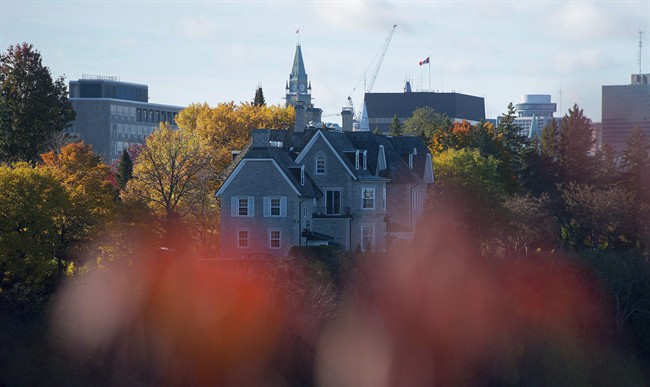TORONTO — The imminent overhaul of the prime minister’s official residence at 24 Sussex Drive presents a golden opportunity to show the world that Canada is serious about combating climate change, says the head of Ontario’s Association of Architects.

Reality show contractors have weighed in with their opinions on renovating, or even razing, the 150-year-old house that the National Capital Commission has said could need as much as $10 million in repairs.
READ MORE: Crumbling 24 Sussex an ‘embarrassment’ says HGTV’s Bryan Baeumler
But OAA President Toon Dreessen said the ongoing renovation conversation takes away from a larger and more symbolic opportunity.
“The Liberal government was elected in part on a platform of making … a significant contribution to fighting climate change,” he said. “And here we have an excellent example, a case study example of exactly how to do this right.”
The residence will undergo some long-overdue renovations now that Prime Minister Justin Trudeau has opted to move into nearby Rideau cottage, but the scale and cost of the renovations remains to be seen.
“We can go in and make the right interventions to make a positive change and demonstrate to the world that we’re serious about climate change. Yes it’s a house. But it’s an important house and no less important than any other of our cultural icons.”
However, Dreessen said even some relatively simple and inexpensive changes could have a major impact.
For example, he suggests new windows would go a long way towards improving energy efficiency. The NCC’s 2008 report points to improperly insulated windows as a source of heat loss and overall energy inefficiency, which also wastes tens of thousands of dollars per year.
Instead of central heating and cooling, the house instead employs window-mounted air conditioners, another wasteful and inefficient option. Dreessen said the overall need for air conditioning could be reduced even by simply improving the ventilation throughout the house.
READ MORE: How 24 Sussex compares to official residences around the world
Dreessen said that, until a thorough architectural survey is done, it’s difficult to diagnose exactly how to make the house more green and energy-efficient. However, he said geothermal energy, solar power and other energy sources are all worth exploring.
“The interventions that have to happen, whether they’re mechanical or lighting, new windows … all the components that work together to form this house, they can all be made to tackle climate change,” he said.
“We can make that building produce less greenhouse gases be energy efficient, and at the same time preserve its heritage.”
Regardless, he emphasizes the importance of eschewing any “Band-Aid” solutions and investing the time and money to make sure the renovation is done right.
“Do we want our message to the world to be, ‘We do things half-assed,’ or, ‘We’ll just let things rot until it’s a disaster,’ or do we want to actually commit and do things right?”




Comments